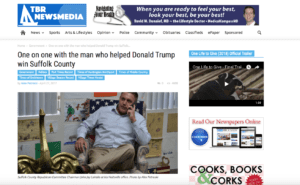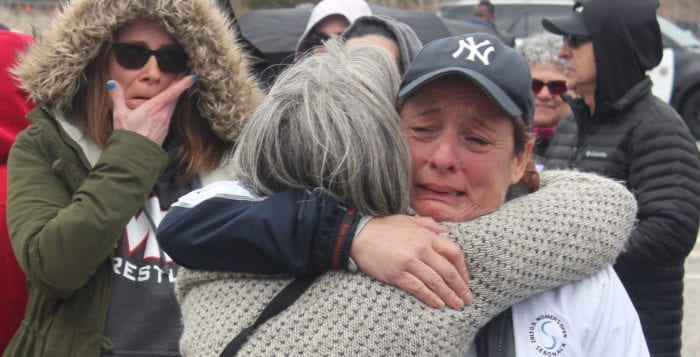TBR News Media raked in 11 New York Press Association awards last weekend.
The company won prizes across the gamut of categories, from news and feature stories to photos and advertisements.
“I am so proud of the staff at TBR News Media that works hard to deliver the news each week,” Publisher Leah Dunaief said. “We are delighted to be among the top winners in the contest, as we are every year.”
“Comprehensive, sustained coverage of a life-or-death infrastructure issue. Lede with compelling citizens rather than reports from bureaucrats or written statements.”
— NYPA judges
In the feature story category, TBR News Media had two winners for its division amongst publications with similar circulation. Port Times Record Editor Alex Petroski won first place for his story on how a local political party boss helped President Donald Trump (R) win Long Island votes.
“Following the election, many wondered, ‘How did Trump win?” judges wrote about Petroski’s piece titled “One on one with the man who helped Donald Trump win Suffolk County,” which profiles Suffolk County Republican Committee Chairman John Jay LaValle and details his relationship with the president. “This story answers that on a micro level with an in-depth interview of the man who helped Trump in Suffolk County. I think more papers would have been well served to seek out similar stories.”
Reporter Kevin Redding took third in the same category for his story for The Village Times Herald on a spooky local bar in Smithtown.
“A perfect pre-Halloween story about the haunted local watering hole,” NYPA judges said. “Plenty of examples of what some have seen, heard and felt, which is just what you’d want from a story about a haunted building.”
Petroski also won second place in Division 3 for his ongoing coverage on a boat ramp in Port Jefferson Village where two people had died and at least one other was severely injured, in the news series cateogry. Times of Huntington Editor Sara-Megan Walsh took third place in the same category.
“Comprehensive, sustained coverage of a life-or-death infrastructure issue,” the judges wrote of Petroski’s five-piece submission that included three stories, a front page and editorial on the topic. “Lede with compelling citizens rather than reports from bureaucrats or written statements. Narrative scene-setting ledes can make stories like this more important and compelling.”

Redding also roped in a second award, getting a third-place nod in feature photo Division 2 for a picture he took for The Village Beacon Record at Hope Walk for Addiction at Cedar Beach in Mount Sinai.
“There was tight competition for third place, but the emotion on the faces of the people in this photo put it a step above the rest,” the judges said of the women hugging and crying in the photo, who’d lost loved ones to battles with addiction.
Arts and Lifestyles Editor Heidi Sutton won first place in the Division 2 picture story category for her layout of local Setauket resident Donna Crinnian’s photos of birds in Stony Brook Harbor. The picture essay was titled “Winged Wonders of Stony Brook.”
“Elegant way to showcase nature of our feathered friends,” NYPA judges wrote.
Director of Media Productions Michael Tessler received an honorable mention in Division 2 coverage of the arts for his review of Theatre Three in Port Jefferson’s rendition of “A Christmas Carol.”
“Nice photos and an insightful story on the characters portraying a beloved classic,” judges said.
The Village Times Herald won first place for its classified advertising, as judges said it was “clean, precise, well-spaces and not crowded,” and Wendy Mercier claimed a first-place prize for best small space ad. TBR News Media’s Sharon Nicholson won second place for her design of a best large space ad. The Village Times Herald ranked in the Top 5 in total advertising contest points with 50, good for fourth place. The first-place winner, Dan’s Papers, received 90.





